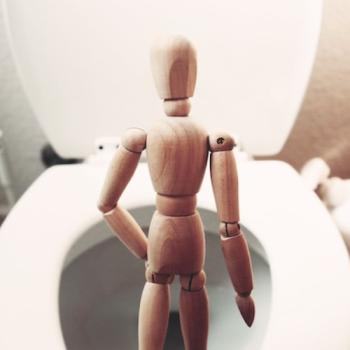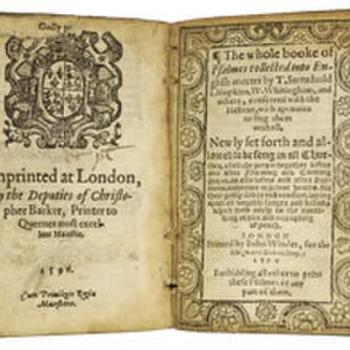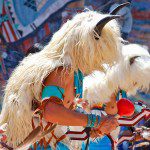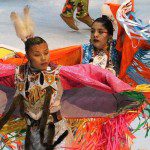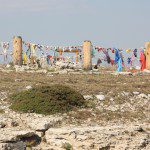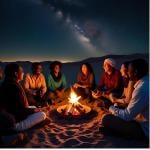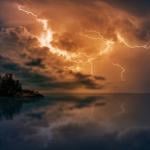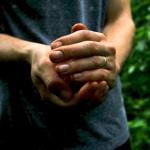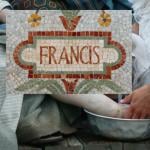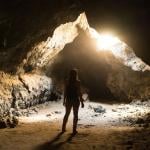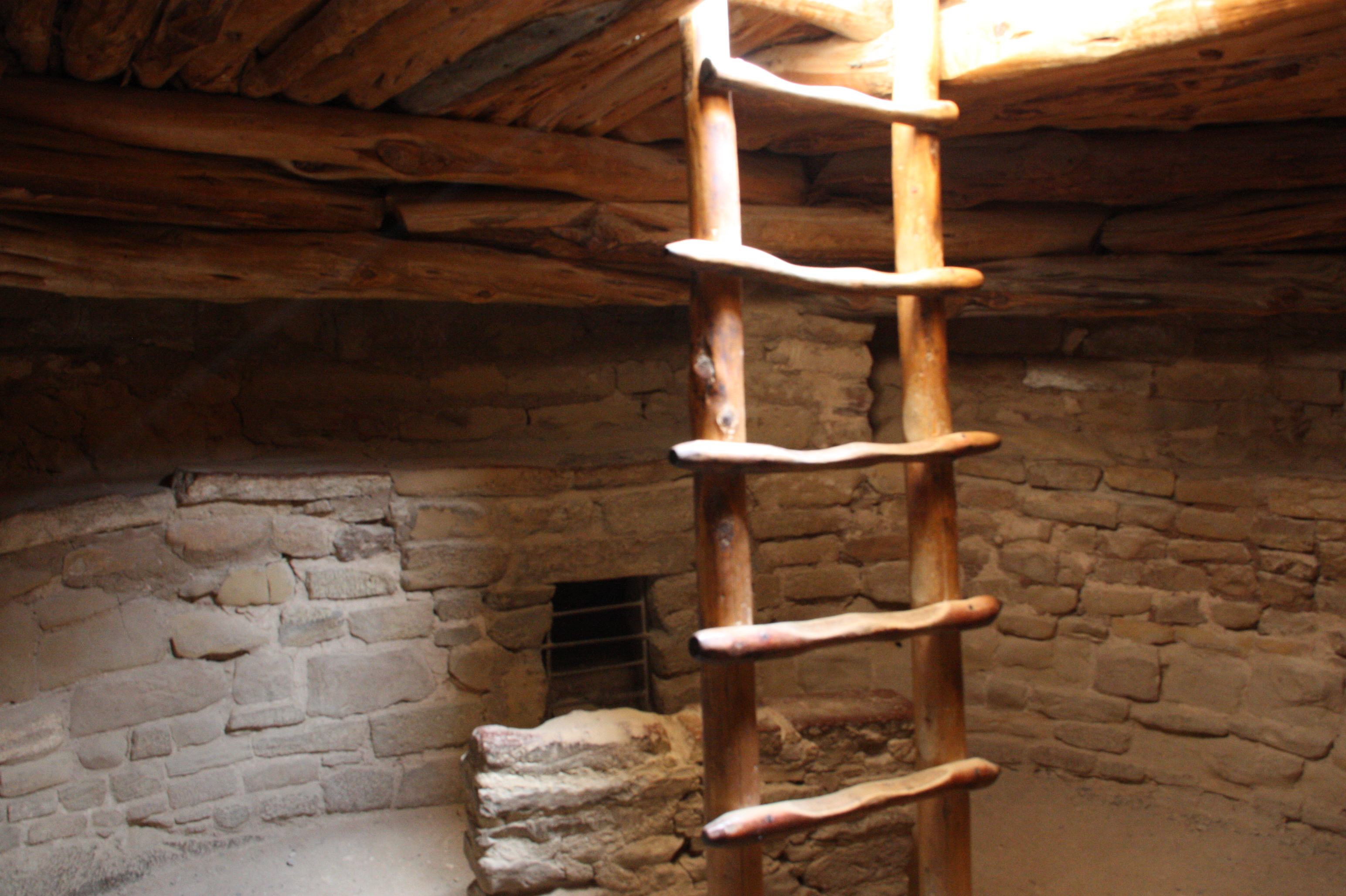
(Below is Part 2 of my Mesa Verde reflections; Part 1 is here)
My recent trip to Mesa Verde National Park was actually my second visit. I had toured there about 30 years ago, but with the passage of time I had forgotten almost everything about the experience except for this: being in a kiva (a ceremonial underground room) looking up at the light coming through a small opening in the roof.
Something about the luminous quality of that light made a deep impression on me. Sunlight can be brutally intense in the Southwest, but in the kiva it warmed but did not overwhelm. I remember the encircling walls of the structure, the wooden logs that formed the ceiling, and the intriguing sense of mystery about the place.
And that, dear readers, was my reaction long before I discovered my love for holy sites. You can just imagine how intrigued I am now by kivas.
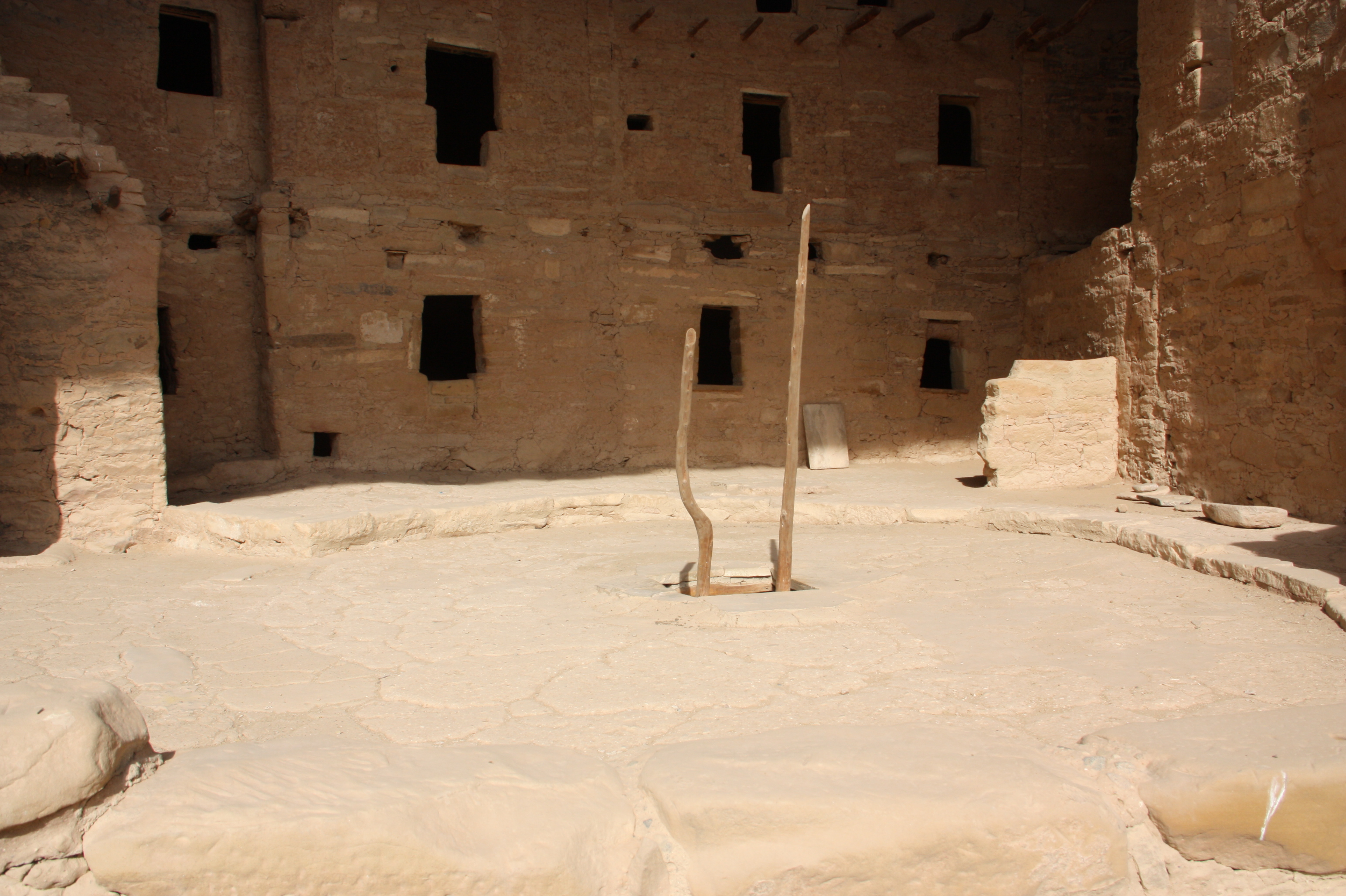
If you have to choose one take-away from a visit to Mesa Verde, that memory from inside a kiva is a pretty good choice. Kivas were the symbolic heart of the civilization that once flourished here. In trying to explain their importance, the national park guides compare them to churches, mosques and temples. But that analogy only partially conveys their importance.
Kivas (the word comes from the Hopi language) are found in or near virtually every living area at Mesa Verde as well as in other sites of the Ancient Puebloans. Archeologists say that each extended family likely had their own kiva, which were excavated out of either sandstone or soil with considerable effort. Because space was so precious in the cliff dwellings, these subterranean rooms likely served a mixture of social, storage and—most importantly—religious purposes. They would have provided a cool shelter from the relentless sun of summer and a warm sanctuary from winter’s cold. They were entered through a hole in their roofs, which were sturdy enough to be used as living space on top. At Mesa Verde kivas are typically round in shape, with a central fire pit and a ventilator shaft that allowed fresh air to flow through. An air deflector stood in front of the fire to keep the flames from being blown out by the fresh air. The kiva’s sides contained a banquette (similar to a bench) around its perimeter and usually had six pilasters, or pillars.
Perhaps the most important part of a kiva was deceptively small: the sipapu, a round opening in the floor that served as the entrance into another world. Sipapu is Hopi for “place of emergence.” Like many cultures (think of the story of Noah’s ark) the Hopi believed that this was not the first world to be created. Hopi oral tradition says that far in the past humans emerged from their former home into this one, passing through a liminal place now symbolically marked by the sipapu.
Modern-day Pueblo elders have given some insights into what may have gone on in these kivas. Craig Childs writes in House of Rain: Tracking a Vanished Civilization Across the American Southwest:
Some modern Pueblo people in the Southwest still use the kiva as their holy chamber, and among those who speak the language of Tewa, the kiva is called te’i, “the place of the cottonwood tree.” The kiva is thought to be a bridge between the underworld and the world above, and the hole traditionally placed in the kiva floor, just beyond the deflector stone and in front of the ladder, represents a place of emergence. In Tewa this hole is called p’okwi koji, the “lake roof hole,” which leads up from a mysterious underground lake. The kiva is where a radiant green tree grows in the spareness of the desert, as if it were a flag raised on barren ground announcing the presence of water below, a sign of hope and fertility.
Childs’ book (which I highly recommend) provides a fascinating look at what is known of this Ancestral Puebloan civilization, including the many ways in which it was shaped by water. In the semi-arid land of the Southwest, drought was an ever-present danger. The difference between a year of plenty and a year of famine often depended upon a single big rainstorm. Water was hoarded and conserved, carefully trapped in small dams on the tops of mesas and harvested from underground springs. When weather patterns shifted and an area became too dry for farming, its residents had to move. The history of the pre-Columbian Southwest can be viewed as a series of back-and-forth migrations chasing the rain.
It’s no wonder that the mysterious hole in a kiva would lead to a metaphorical lake.
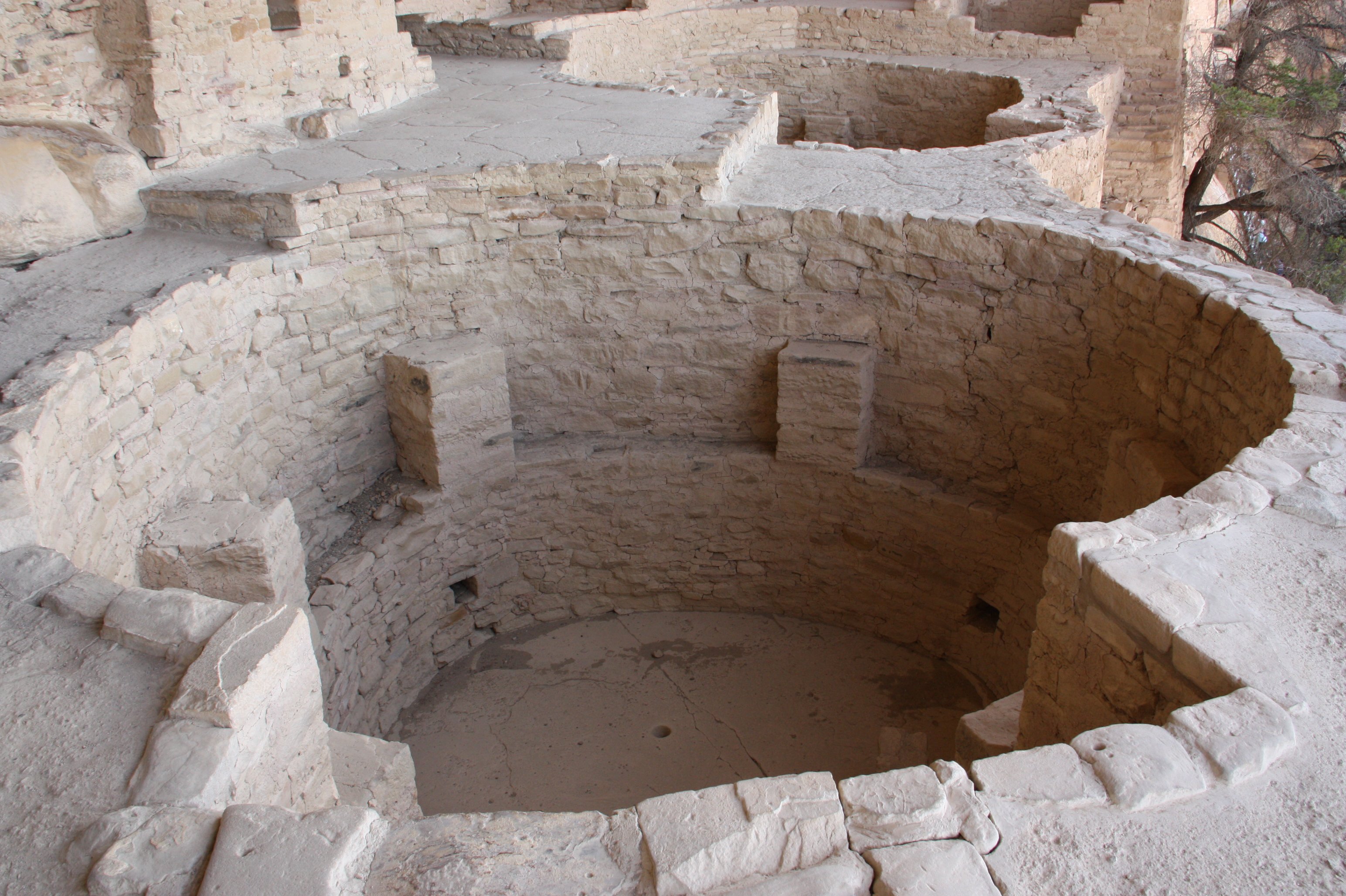
Bob and I got the chance to view dozens of kivas, both at Mesa Verde and on a day-long tour in the Ute Mountain Tribal Park, which is adjacent to the national park. The Utes are not descended from the people who once lived at Mesa Verde, but for many years they have been caretakers of some of their ruins. The Ute Mountain Tribal Park offers tours of remote sites that are not the tidied-up, restored dwellings one sees at Mesa Verde. While some have been documented by archeologists, most have been left in the same state as they have existed for many centuries.
What a day that was! The entire tour had an Indiana Jones flavor to it. We bounced along on dirt roads, hiked on narrow paths that snaked along the sides of canyons, and climbed steep ladders to peer into cliff dwelling sites. In some, we could see the colored plaster that had once covered the walls, the designs faded but still recognizable. Pieces of broken pottery and other artifacts could be picked up and examined without a park ranger getting upset. I remember at one point holding a piece of rope in my hand. I could see how it had been constructed of different types of fibers, the pieces twined carefully around each other, and it seemed impossible to believe that nearly a thousand years had passed since it was made.
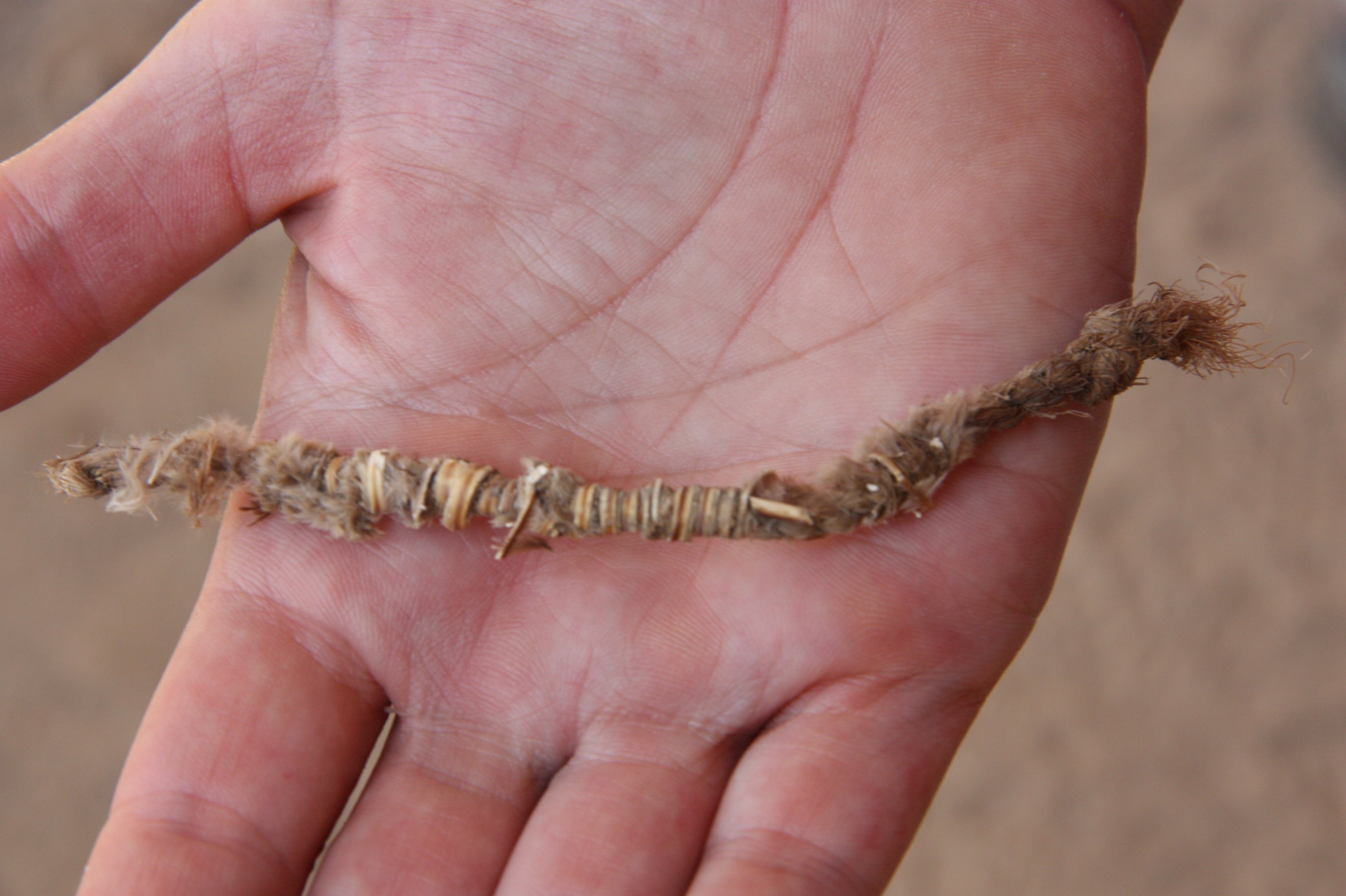
But once again it was the kivas that most fascinated me. Unlike at Mesa Verde, these kivas were often collapsed in on themselves, with their original roof beams lying in disarray. Our guide told us that before a group left an area, they commonly burned the roofs, as if to ensure that no one else would have access to the power contained within.
What would it have been like to live above one of these kivas? To know that underneath your living space was the entry into a place of mystery and wonder? There are so many possible symbolic meanings of a kiva that one hardly knows where to begin. They recall the darkness of the womb and the safety of the cave. They were betwixt-and-between places, pregnant with possibility. In emerging from them, perhaps the people felt they were reborn anew, following in the footsteps of their ancestors.
At Mesa Verde, I learned that the descendants of the Ancestral Puebloans come back on a regular basis to use the kivas for religious ceremonies. It pleases me to think of how that busy national park is full of tourists during the day, but after hours it once again becomes the property of those who are spiritually tied to it. The rangers depart, and the sacred spaces come to life, like a heart that beats once again. Perhaps this is the reason why the cliff dwellings seem surprisingly alive, with spirits that shift and move among the ruins.



